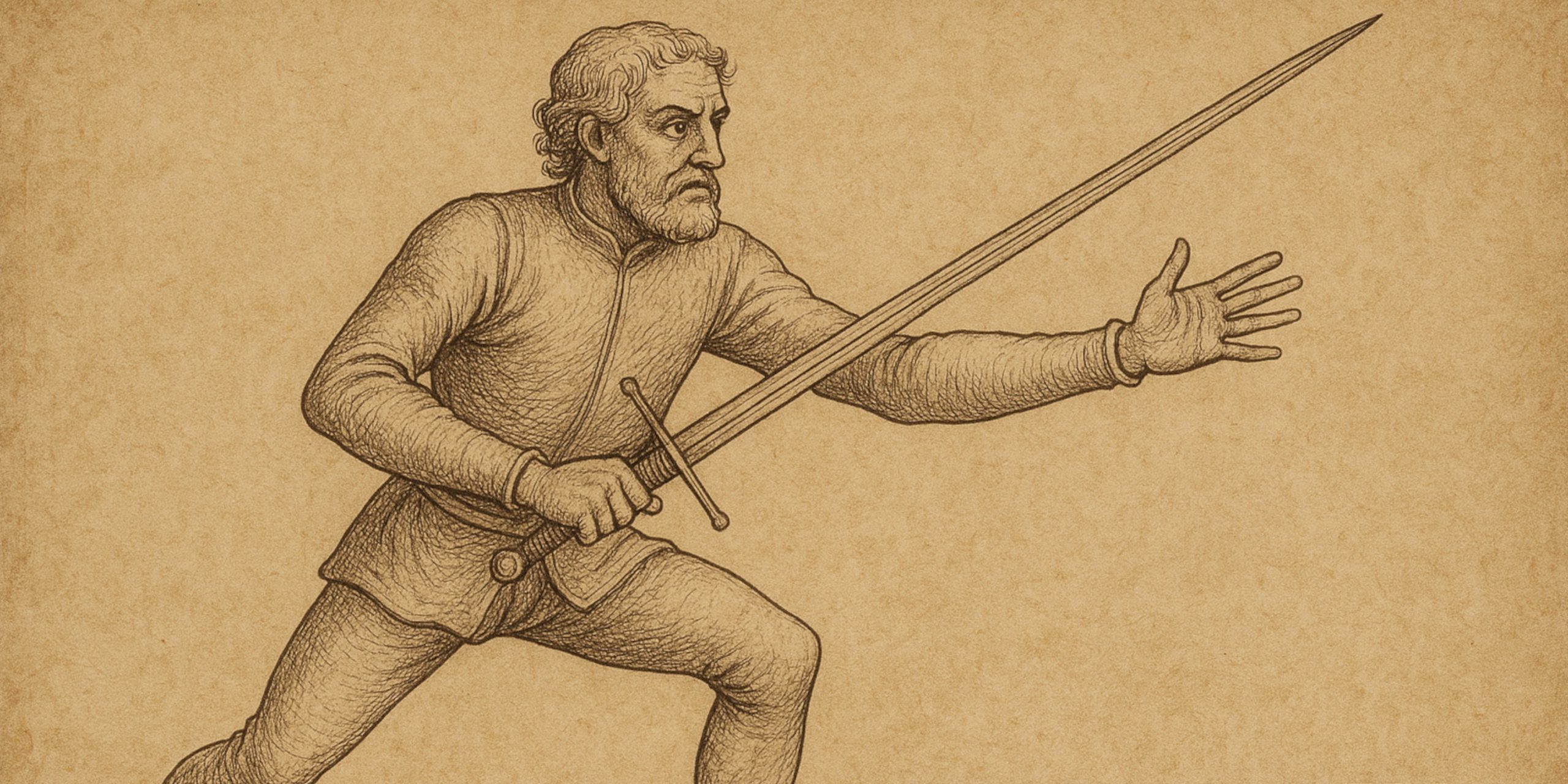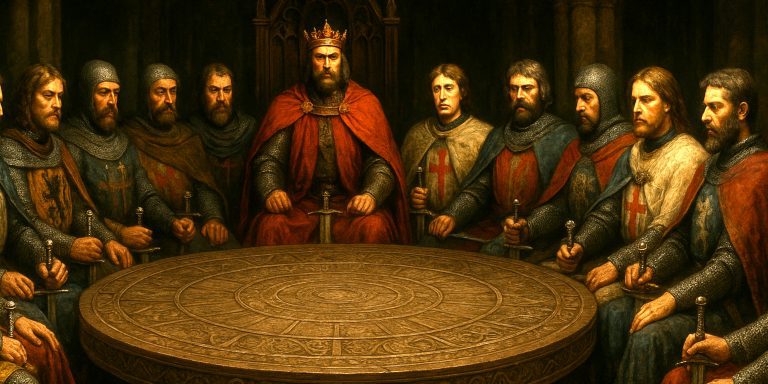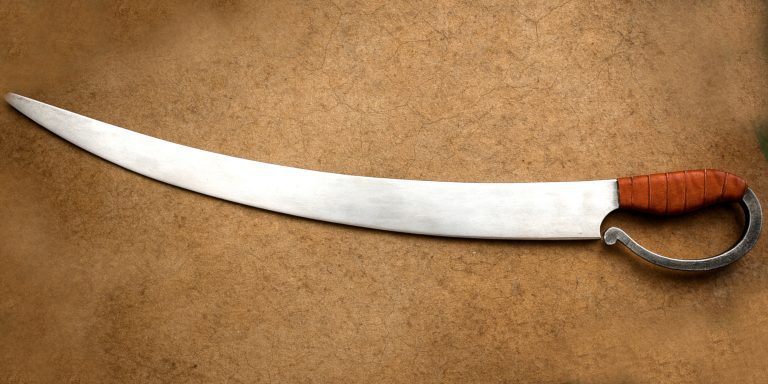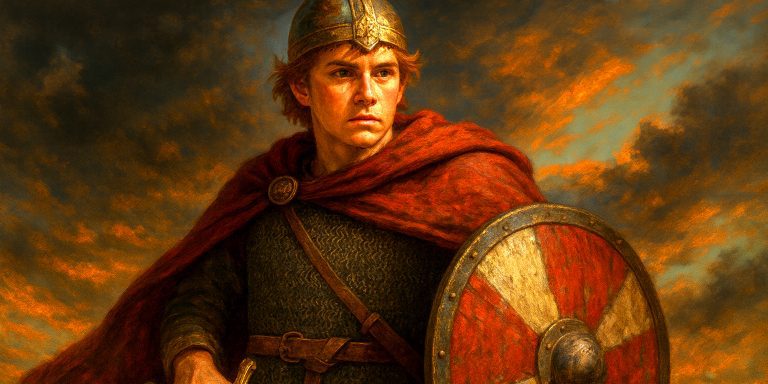
Fiore dei Liberi, a 14th-century Italian fencing master, remains one of the most significant figures in the early martial traditions of Europe. His treatises, particularly the Fior di Battaglia (The Flower of Battle), provide a detailed window into the mindset, structure, and application of martial arts as they were taught and practised among the nobility and mercenary elite of his time.
Context and Background
Fiore was active during a period of regional conflict, shifting allegiances, and the professionalisation of arms-bearing. He was born in the region of Friuli, likely around 1350, and spent decades studying and teaching martial arts across Italy and the Holy Roman Empire. His surviving works suggest he was both well-travelled and highly respected.
The Fior di Battaglia survives in several versions, each rich with illustrations and textual explanations. These include not only sword techniques but also combat on foot and horseback, in and out of armour, with a wide range of weapons including daggers, spears, axes, and the longsword.
Core Principles of Fiore’s System
Fiore’s approach is not simply a technical manual. It is a structured combat philosophy rooted in timing, positioning, psychological control, and the intelligent application of force. He divides combat into distinct phases, with a focus on four main components: poste (guards), parare (parries), contrare (counters), and contra-contrare (counter-counters). This hierarchical logic helps fighters understand initiative and how to recover control if they lose it.
Central to Fiore’s teaching is the concept of Fighting with the Mind as much as with the body. He places strong emphasis on reading the opponent, recognising threats, and adapting responses based on context. For example, in armoured combat, thrusts are often prioritised due to their ability to exploit gaps, whereas unarmoured combat features a broader mix of cuts and joint manipulation.
The Role of the Four Animals
Fiore symbolically introduces four animals to represent key martial virtues:
- The Lynx (foresight): Represents perception, awareness, and tactical intelligence.
- The Tiger (courage): Symbolises aggression and the will to act without hesitation.
- The Elephant (stability): Stands for strength and a grounded stance.
- The Lion (boldness): Embodies heart, daring, and assertiveness in battle.
These are not poetic flourishes. They are strategic reminders that effective fighting demands a combination of mental alertness, physical control, decisive action, and psychological presence.
Guards and Their Logic
Fiore’s poste are not static poses. They are dynamic positions from which a fighter can attack, defend, or transition. Some are offensive, inviting strikes or readying thrusts. Others are defensive, angled to intercept attacks or set traps. Each has a purpose, and their utility changes based on weapon type and whether the fight is in armour or not.
Importantly, Fiore insists that no guard is invincible. Their effectiveness relies on context and timing. Fighters are encouraged to move fluidly between guards, always adapting to the flow of combat rather than committing to fixed sequences.
Grappling and Control
Wrestling (abrazzare) is foundational in Fiore’s system. His treatise begins with unarmed techniques, which include breaks, throws, and joint locks. These are not supplementary skills. They are essential for disarming, controlling, and overcoming opponents, particularly in close quarters.
Fiore treats grappling as both an end in itself and a fallback in situations where weapons fail. In this, he shows a holistic understanding of real combat, where contingencies and chaos demand flexibility and readiness to shift between disciplines.
Authority, Practice, and Lineage
Fiore’s system shows the hallmarks of a professional teacher who trained noblemen and battlefield commanders. His treatises reference duels he fought and won, reinforcing the idea that his methods were not theoretical. The structured pedagogy, complete with didactic rhymes and visual cues, points to a codified school of instruction.
He also presents a degree of lineage, noting that he had studied with multiple masters and engaged in real fights to test and prove his skills. Unlike many who came after him, Fiore’s authority is not drawn from abstraction or excessive scholasticism but from direct experience.
The Seven Swords Takeaway
Fiore dei Liberi’s combat philosophy is comprehensive, pragmatic, and psychologically aware. He teaches that survival and victory in combat depend not only on technique but on perception, courage, adaptability, and presence of mind. His work is not simply a collection of techniques but a carefully constructed martial doctrine rooted in real-world violence and the disciplined craft of those who faced it. Through his treatises, his voice still instructs, warning that brute strength alone is not enough and that those who fight with intelligence and precision will prevail.



